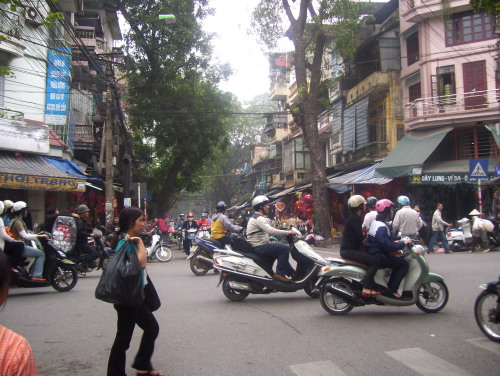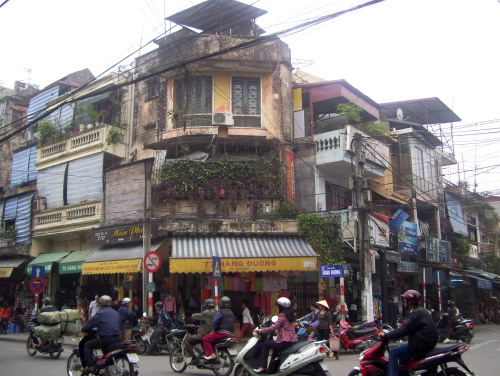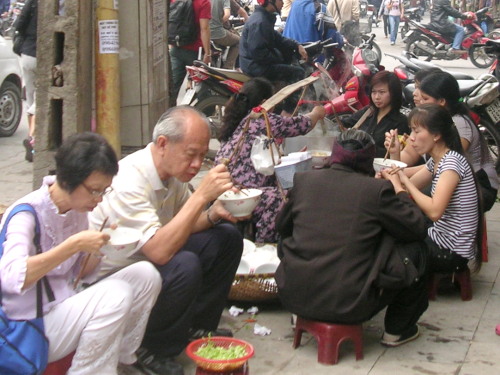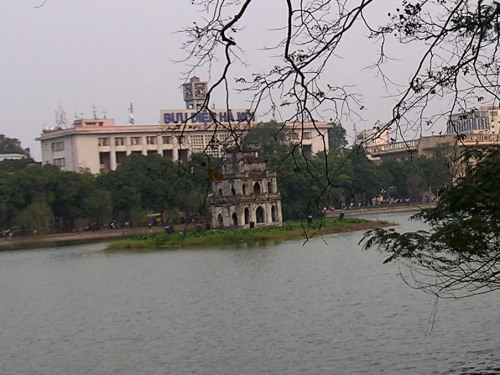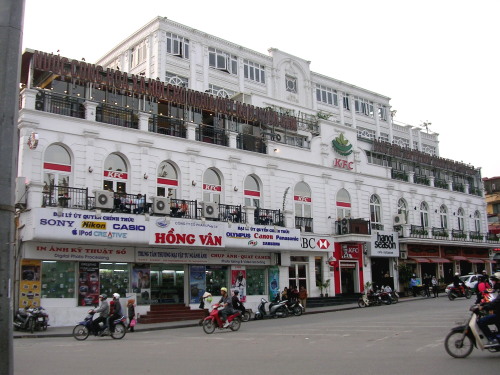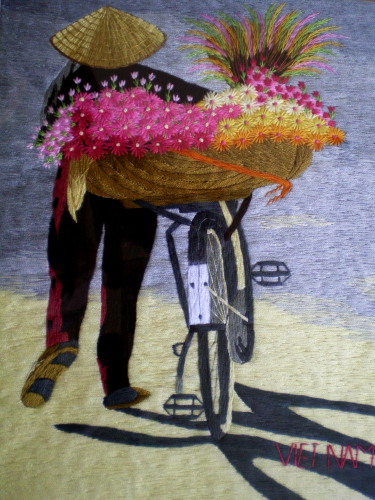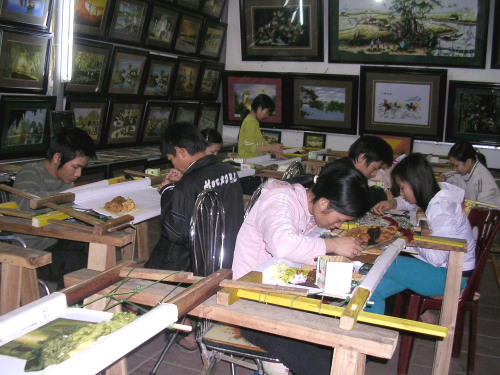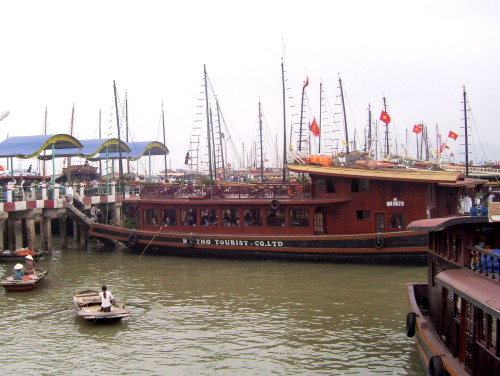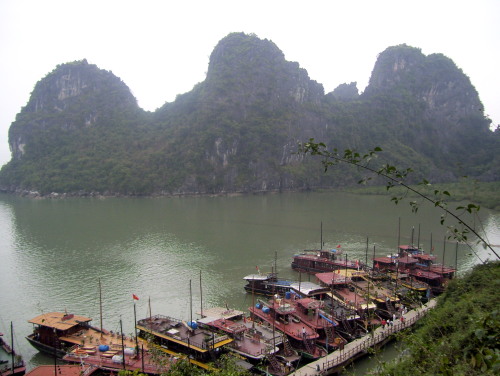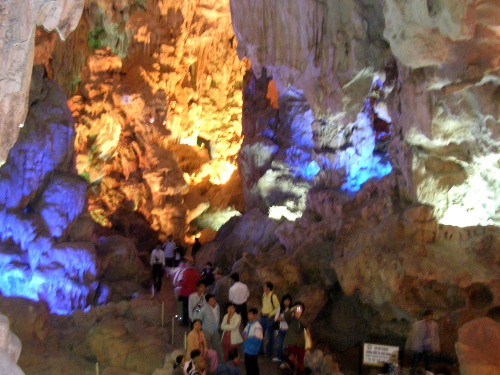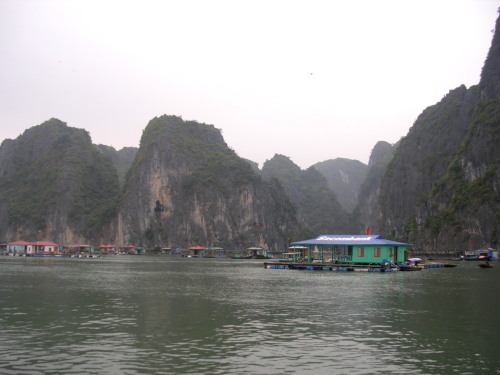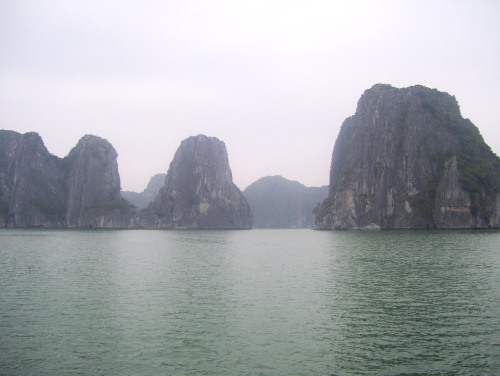Hanoi Travel I
Hanoi
Hanoi is in the north of Vietnam. Located on the west bank of a long river, Red River (1,200 km), it has over 1000 years of history.
Red River Delta
The Red River originates from the highlands in Yunan Province and flows south-east. Midway, it is joined by two tributaries, Clear River (Lo River) and Black River (Da River). Together, the rivers bring a large amount of alluvial soil annually and deposit it in the Gulf of Tonkin creating a large fertile delta, Red River Delta, which is 120 km by 140 km now. The delta is now the economic hub of North Vietnam where tourism, agriculture, industry, trade, commerce, finance and banking are growing. As a result, the delta has become a densely populated area of over 6 million people.
Hanoi as a Capital
Hanoi was first made a capital in 1010 by Ly Thai, the first ruler of the Ly Dynasty. Then in 1887, the French colonialists made it the capital of the French Indochina. Later, in 1954, the Viet Minh led by Ho Chi Minh liberated North Vietnam from the French colonialists and made it the capital of the Independent North Vietnam. Finally, on 2 July 1976, it became the capital of Vietnam when North and South Vietnams were reunited.
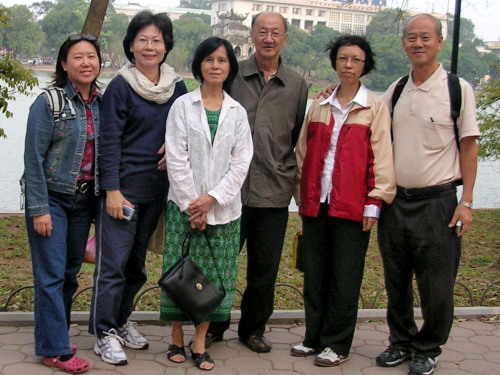
Group of Six: L to R- Grace Gan, Grace Chen, Mrs. Chua, Mr. Chua, Peng (writer’s wife) and writer at the Hoan Kiem Lake Park
Group of Six
On 15 March 2009, my wife and I, together with four friends (Mr. and Mrs. Chua, Grace Chen and Crace Gan), took an Air Asia plane at Kuala Lumpur Internatinal Airport and flew to Hanoi to see for ourselves the places of interest there.
Day 1
15 March 2009
After 3 hours and 15 minutes of flying we landed safely at Noi Bai Airport which is 35 km north of Hanoi. Then we paid USD 15 each for the transport from the airport to the hotel we had booked earlier through Air Asia. The hotel known as Hanoi Palace Hotel is a three-star hotel. It is located in the old part of Hanoi which is called the Old Quarter.
The Old Quarter
The Old Quarter is a maze of narrow streets lined with narrow quaint shophouses and trees. These old shophouses are narrow because the owners were taxed according to the width of their buildings. To overcome the narrow building space, they built them longer and the latter are commonly known as “tube houses”.
The Old Quarter had 36 streets that were named after the trades carried out there in the olden days, e.g. Hang Bac (Silver Street), Hang Be (Rattan Raft Street), Hang Bo (Basket Street), Hang Bong (Cotton Street), Hang Ca (Fish Street), etc. Most of these shophouses have given up their traditional trades and are now cafes, bars, mini-bars, cyber-cafes, mini-hotels, tour-agency offices, restaurants, etc.
The Old Quarter As A Tourist Attaraction
The Old Quarter has now become a tourist attraction. To learn about the old city of Hanoi, the Old Quarter is the best place to visit. The first thing we did on our first day in Hanoi was to visit the sights of the Old Quarter and feel the hustle and bustle of the place. The old buildings here are either two or three storeyed. Most of them are built with balconies after the style of the French buildings.
The old streets are untidy and dirty with wires strung from pole to pole and waste water flowing along the sides of the roads. Most of the buildings have not been painted for umpteen years. Quite often a procession of trishaws can be seen moving slowly along the roads. They carry tourists who want to enjoy the sights and sounds of the quaint Old Quarter.
Chaotic Traffic Situation
While walking along the streets, we were shocked to see the chaotic and constant flow of traffic. Besides being narrow, the streets allow two-way traffic flow aggravating the traffic situation. Motorbikes and cars honk frequently asking pedestrians and others to give way. I was surprised that nobody was agitated by the honking. I quess the locals understand the unavoidable chaotic traffic situation and have already got used to the noise. While walking in the Old Quarter we were always on the lookout for the vehicles making sure that we would not end up in the hospital.
Hardworking Vietnamese Women
It is a common sight to see hardworking Vietnamese women, some in conical straw hats, peddling their goods in baskets which they carry around and persuading passers-by to buy them. They sell fresh flowers, food, drinks, vegetables, fruits, meat, etc. Besides, on the roadside or walkway of every street, there are some women who set up small foodstalls selling a variety of cheap local food like chicken, pork or beef rice-noodle (pho), porridge, spicy rice-noodle, etc. During our three days stay in Hanoi we had patronized some of these stalls. It was quite an experience for us to savour their food in the streets. We had to sit on a low plastic stool (about a foot high), hold a bowl of hot food (no table was provided) and enjoyed the cheap Veitnamese food in the midst of the noisy traffic.
Hoan Kiem Lake
There is a lake, Hoan Kiem Lake, in the Old Quarter. In the middle of the lake, there is an islet with a small, lonely pagoda-like tower known as Tortoise Tower (Thap Rua). A temple, Ngoc Son Temple (Jade Mountain Temple), is located near it. It was built in the 18th. century in dedication to a scholar, Van Xuong, and General Tran Huang Dao who fought against the Mongols in the 13th. century.
According to a Vietnamese legend about the lake, a Vietnamese king, Le Loi, received a magic sword from a golden tortoise in the lake in the 15th. century. He used it to fight the Chinese invaders and won the battle. Later, he returned the sword to the creature which then disappeared in the lake. So, the Hoan Kiem Lake is also known as the Restored Sword Lake and the Tortoise Tower was erected in memory of the helpful animal.
A Place for Leisure and Recreation
The lake is a popular place for the locals. They go to the park round the lake in the morning and evening to dance, sing, stroll, relax, exercise, meet friends, etc. This lake park is a also favourite haunt for lovers in the evening. They can be seen having conversation with each other, admiring the scenic lake together or having intimacies that attract the attention of curious onlookers.
Pick pockets Pick pockets are many there. I was a victim on the last night of my stay in Hanoi.
An expensive digital camera was taken away from my chest pocket without my knowledge by a thin, tall man who wore a cap to hide his identity. When I knew that the thief had stolen my camera, he had disappeared in the crowd. I was saddened to have lost over 400 photos which I had painstakinly taken in some tourist places in North Vietnam. (The photos you see here are given to me by akind friend, Grace Gan, who toured together with me and others.)
Old Colonial French Buildings
Old colonial French buildings are still around, especially, in the east and south of the Hoan Kiem Lake., e.g. the Grand Opera House, the State Bank of Vietnam (formerly the Bank of Indochina), the Presidential Palace (formerly the palace of the governor-general of French Indochina), the Cathédrale St-Joseph, and the historic hotel Sofitel Metropole.
Day 2
16 March 2009
Journey to Halong Bay
In the morning, we planned to go to a famous place which is known as Halong Bay. It is 170 km east of Hanoi. At 9.30 a.m., a van came to our hotel to fetch us. Together with other tourists, we travelled for
3 1/2 hours on a road which was dusty, busy and sometimes bumpy. We went through agricultural land planted mostly with paddy, villages and towns to Halong Bay. We only stopped once at a large building which sold all kinds of Vietnamese arts and handicrafts.
Embroidery Arts
That building had a large room where young boys and girls were employed to produce embroidery pieces of art. They, painstakingly, sewed a piece of white cloth with coloured threads to produce a picture. A piece of picture of size 20 .5 cm x 25 .5 cm would take a child 2 weeks to complete and cost USD 25 only. We were shocked when their supervisor told us that those children were born with birth defects and disabilities. It was because their parents were unfortunately exposed to Agent Orange during
the Vietnam War in the 1970’s.
Before leaving the place, my wife bought a beautiful picture of a woman pushing a bicycle with a basketful of fresh, colourful flowers (see photo above).
Agent Orange
In 1970, during the Vietnam War, the Americans sprayed the jungles in Vietnam with a very toxic chemical, dioxin, commonly known as Agent Orange, to destroy the trees depriving the North Vietnamese armies of the jungle cover. Consequently, 3 million people were killed, the survivors suffered disabilities and their chidren were born with birth defects and disabilities.
Halong Bay
Soon we arrived at the Hon Gai wharf at 1 p.m. We were surprised to see the place crowded with hundreds of tourists waiting to board their boats to Halong Bay. There were lots of boats there. They looked like Chinese junks which were large and made of wood. Every boat had a large, wooden and painted figure of a dragon attached to its bow. To the Vietnamese, it signifies blessings and prosperity.
We could not go to the boat yet as we had to wait for an hour for a group of tourists to arrive. When they arrived, they joined us and together we boarded a boat. Soon it left the wharf and was moving slowly towards the small and large islands scattered in the Bay of Halong numbering over 1000.
Halong Bay Islands
The scenery of the islands in the Halong Bay is considered a natural wonder of the world. The locals name the islands according to their shapes, such as Banana, Tortoise, Wallowing Buffalo, Nail, Small Fish, Wading Ox, Fighting Cocks, etc. Some of these islands, especially the large ones, have caves.
After having lunch in the boat, we went to the top deck and watched boats cruising to the islands and boats returning to the wharf. It looked as though the boats were on a warpath. Soon we sighted the islands of different shapes, sizes and heights, seemingly, emerging from the sea. The panoramic view of these islands was spectacular in spite of the haze in the air that reduced the visibility slightly.
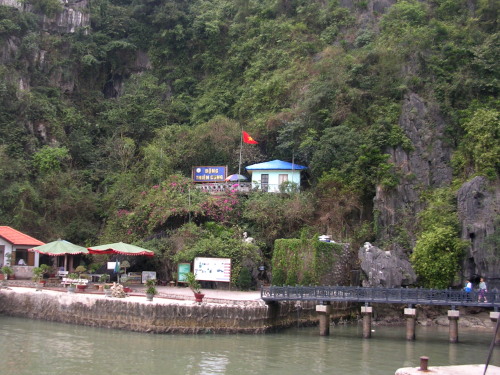
A Vietnamese Belief
According to a Vietnamese belief, a large dragon came down from heaven to the earth and with its powerful long tail carved a large rock into small hills and then flew away. So the people call the place ‘Halong Bay’ which means ‘Descending Dragon Bay’.
Thien Cung Cave
An hour later, we stopped at an island and disembarked the boat. Then we climbed steep staircases and entered a cave, Thien Cung Cave. It was large and had a high ceiling. Stalagtities, stalagmites and
pillars of different shapes and sizes were plentiful inside. Some of these formations had collapsed. With a little bit of imagination, we could see some of these rock formations that looked like dragons, lions, monkeys, fish, corals, etc. I noticed that the cave was unusually white and clean. I guessed it had been scrubbed clean not by nature but human beings. My guess was confirmed when we entered an adjacent cave which was in its original condition: dark, dirty, and covered with algae and moss.
Halong Bay Cruise
Later, we left the island. As our boat cruised among some towering islands with sheer rocks and lush rainforests we past by a floating village where the fishermen bred fish in cages and nets. When we saw two small rocks close to each other our tour-guide told us that they were
called “fighting cocks’. They were aptly named as the two rocks looked like the cocks’ heads facing each other and getting ready to fight. Then we headed back to the Hon Cai wharf and travelled back to our hotel in Hanoi by the same van that brought us to the former place.
(continued on Hanoi Travel II)
Comments
Tell me what you're thinking...
and oh, if you want a pic to show with your comment, go get a gravatar!


